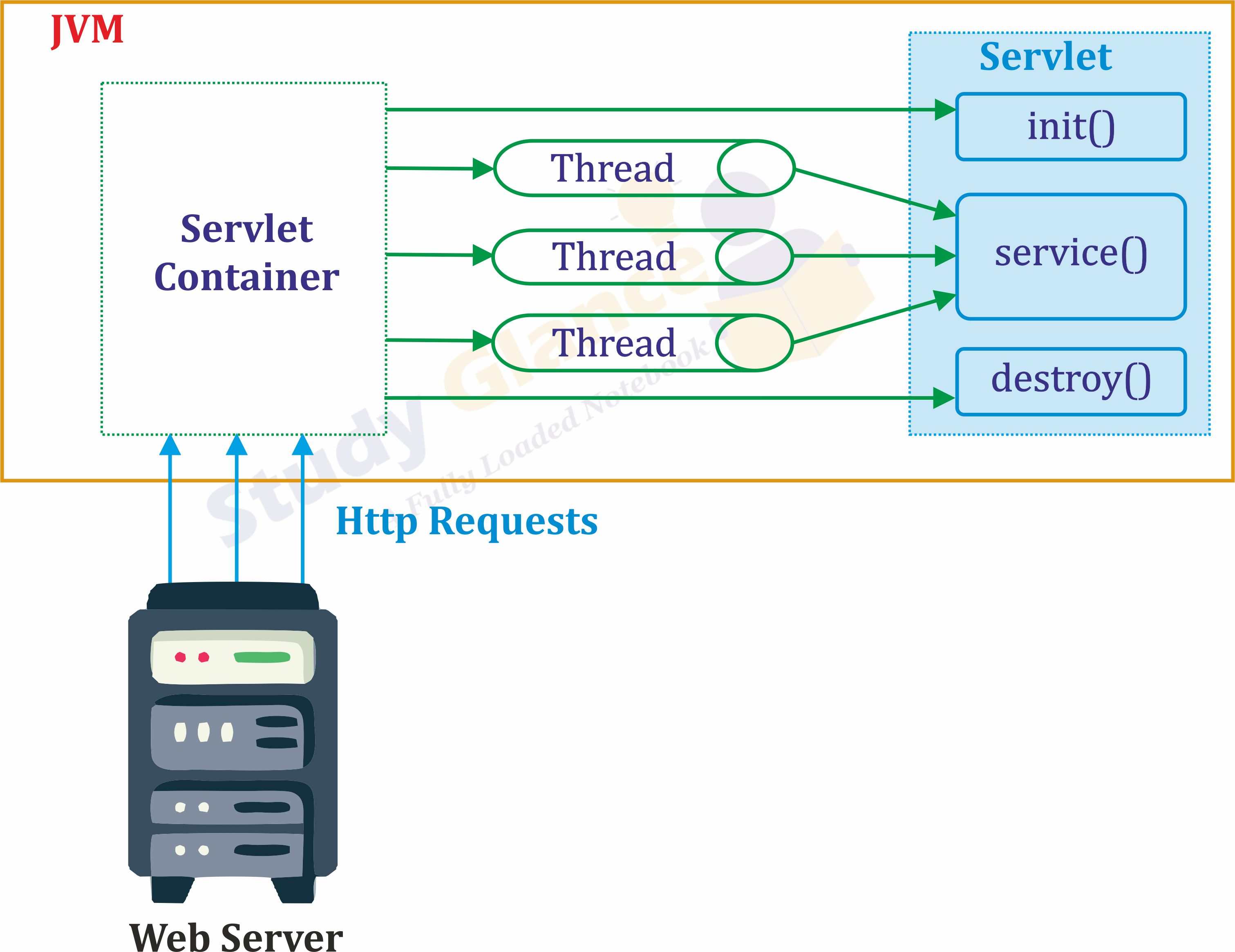Servlet Life Cycle
The Life Cycle of a Servlet
Three methods are central to the life cycle of a servlet. These are init( ), service( ), and destroy( ). They are implemented by every servlet and are invoked at specific times by the server. Let us consider a typical user scenario to understand when these methods are called.

First, assume that a user enters a Uniform Resource Locator (URL) to a Web browser. The browser then generates an HTTP request for this URL. This request is then sent to the appropriate server.
Second, this HTTP request is received by the Web server. The server maps this request to a particular servlet. The servlet is dynamically retrieved and loaded into the address space of the server.
Third, the server invokes the init( ) method of the servlet. This method is invoked only when the servlet is first loaded into memory. It is possible to pass initialization parameters to the servlet so it may configure itself.
Fourth, the server invokes the service( ) method of the servlet. This method is called to process the HTTP request. You will see that it is possible for the servlet to read data that has been provided in the HTTP request. It may also formulate an HTTP response for the client.
The servlet remains in the server’s address space and is available to process any other HTTP requests received from clients. The service( ) method is called for each HTTP request.
Finally, the server may decide to unload the servlet from its memory. The algorithms by which this determination is made are specific to each server. The server calls the destroy() method to relinquish any resources such as file handles that are allocated for the servlet. Important data may be saved to a persistent store. The memory allocated for the servlet and its objects can then be garbage collected.
Next Topic :Servlet API